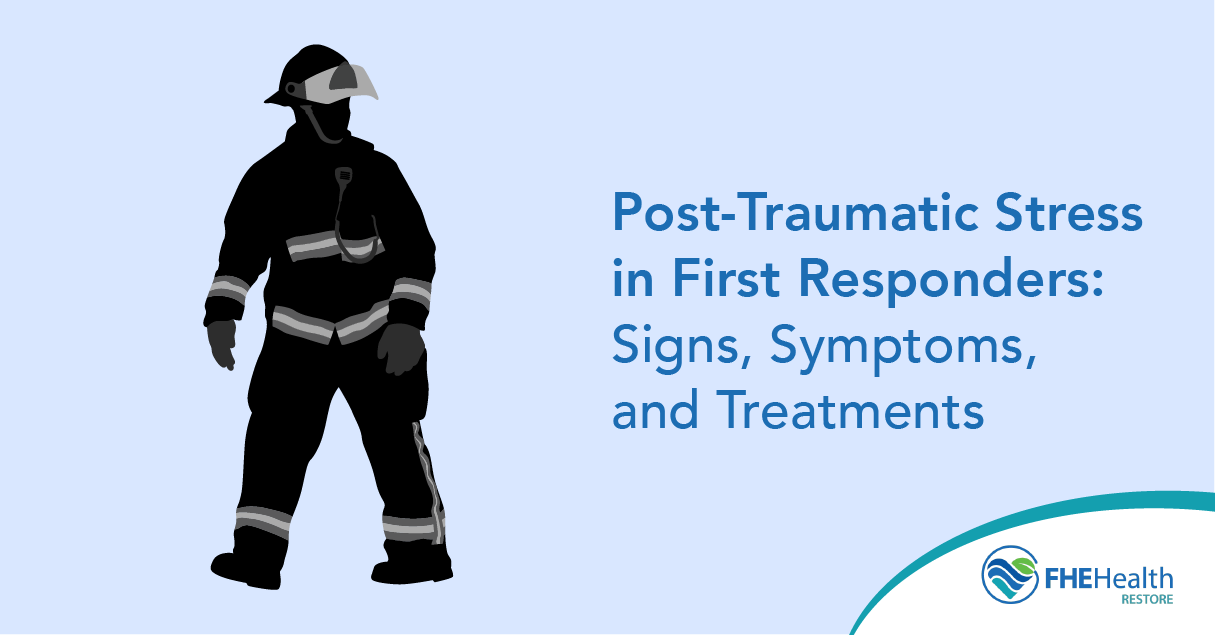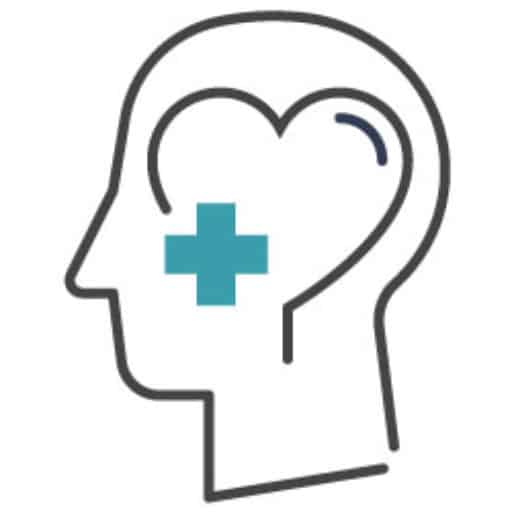When you put on your uniform every day, you’re making a commitment to protect and serve your community. You witness scenes most people never encounter and face dangers that would traumatize the average civilian. Yet despite the heroic nature of your work, trauma in first responders remains largely a hidden struggle. More than 80% of first responders experience traumatic events on the job, and the statistics are sobering. Roughly 1 in 3 first responders develops PTSD, compared to 1 in 5 people in the general population.
The culture of strength and resilience that defines first-responder work can also become a barrier to seeking help. Too often, mental health struggles are seen as a weakness rather than a natural response to extraordinary circumstances. This article explores why first responders and PTSD are so closely linked, what signs to watch for and how to break the silence to get the support you deserve.
Why First Responders Are at High Risk for PTSD
First responders are regularly confronted with exposure to traumatic events, including potentially life-threatening situations as well as the grave injuries and deaths of colleagues and civilians. Whether you’re a police officer responding to violent crimes, a firefighter entering burning buildings or a paramedic treating critical patients, your work consistently puts you face-to-face with human suffering and danger.
The cumulative effect of these experiences takes a significant toll. Around 30% of first responders end up being diagnosed with psychological trauma, compared to only 20% of the general population. That means roughly 1 million emergency personnel need mental health support.
Common Signs and Symptoms of Trauma in First Responders
PTSD doesn’t always manifest immediately after a traumatic event. You might notice changes in yourself weeks, months or even years later. The most common symptoms of PTSD are nightmares and flashbacks of distressing events. PTSD can also cause physical symptoms, such as chronic pain, sweating, jitteriness, headaches, dizziness and chest pain.
Watch for these key warning signs:
- Emotional symptoms. Persistent feelings of fear, guilt, shame or anger; emotional numbness; feeling detached from family and friends; and loss of interest in activities you once enjoyed
- Physical symptoms. Chronic fatigue, headaches, muscle tension, digestive issues and changes in appetite or sleep patterns
- Behavioral changes. Increased alcohol or substance use, reckless behavior, avoiding places or people that remind you of traumatic events and difficulty performing routine tasks
- Cognitive symptoms. Trouble concentrating, memory problems, negative thoughts about yourself or the world and difficulty making decisions
Trauma in first responders can also manifest as hypervigilance and intrusive thoughts that interfere with their ability to relax or connect with loved ones.
Barriers to Seeking Mental Health Support
Despite the high prevalence of mental health issues among first responders, seeking help remains challenging. The barriers you face include:
- Cultural stigma. This mental health stigma surrounding first responders likely stems from an expectation from society, their agency or themselves to be the calm, measured, strong and fearless professional. Any attempt at seeking mental health support may be viewed as a weakness.
- Fear of career consequences. You may have concerns about how seeking treatment might affect your job security, advancement opportunities or fitness-for-duty evaluations.
- Confidentiality concerns. You may worry whether your mental health records will remain private and who might have access to this information.
- Practical barriers. The most frequently endorsed barriers are scheduling concerns and not knowing where to get help. Shift work, overtime demands and limited availability of specialized services can make accessing care difficult.
- Lack of understanding. Many mental health providers don’t understand the unique culture and experiences of first responders, making it more difficult to relate to their treatment approaches.
Evidence-Based Treatments That Work for First Responders
The good news is that effective treatments exist for trauma in first responders, with several strongly recommended as treatments for PTSD. Research shows these approaches work well for first responders:
- Cognitive processing therapy. CPT is a type of cognitive behavioral therapy developed specifically for PTSD. Among many skills, patients learn to challenge distorted negative self-cognitions resulting from traumatic experiences. This 12-session treatment has successful, long-lasting recovery outcomes.
- Prolonged exposure therapy. This approach helps individuals process traumatic memories safely by gradually confronting avoided situations and memories.
- Eye movement desensitization and reprocessing. EMDR helps process traumatic memories through bilateral stimulation while recalling the event, allowing the brain to reprocess the trauma in a less distressing way.
- Virtual reality-enhanced therapy. Emerging treatments for PTSD in first responders, such as exposure therapy augmented by a new virtual reality system, show promising results, with some studies indicating 66% of people no longer meeting diagnostic criteria for PTSD at post-treatment and a dropout rate of 2%.
The Role of Peer Support and Specialized Programs
Peer support programs can be particularly effective for first responders because they connect the individual with others who truly understand their experiences. Peer supporters help peers cope after a major critical incident, lower stigma associated with seeking mental health treatment and help build a culture of care and concern.
These programs offer several benefits:
- Shared understanding. Peer supporters share similar work experiences and can provide a safe space to discuss challenges.
- Reduced stigma. When colleagues openly discuss mental health and model help-seeking behavior, it normalizes these conversations within your department.
- 24-7 availability. Many peer support programs offer round-the-clock crisis support from trained first responder peers.
Building Resilience and Long-Term Recovery
At the heart of mitigating PTSD is the concept of resilience. Resilience is a process of navigating psychological, social, cultural and physical resources to sustain or regain well-being.
Recovery from trauma isn’t just about treating symptoms. It’s about building long-term resilience and thriving in your professional and personal life.
Early intervention is critical when it comes to mental health. First responders should be encouraged to seek help at the first signs of stress or trauma. Regular exercise, adequate sleep, healthy nutrition and stress management techniques, including mindfulness or meditation, can build resilience against future trauma. It’s important to set boundaries between work and personal time. Also, engaging in hobbies and maintaining relationships outside work helps create emotional buffers.
Recovery is often an ongoing process. Maintaining connections with mental health professionals, peer support groups or both can provide continued stability. Including family members in your recovery process can strengthen your support network and help them understand what you’re experiencing.
Ready to Take the First Step?
At Restore Mental Health, we understand the unique challenges you face as a first responder. Our specialized team provides confidential, evidence-based treatment designed specifically for those who serve and protect our communities. You don’t have to suffer in silence. Contact us today to learn how we can help you reclaim your mental health and build lasting resilience.



